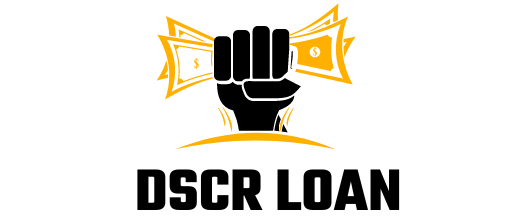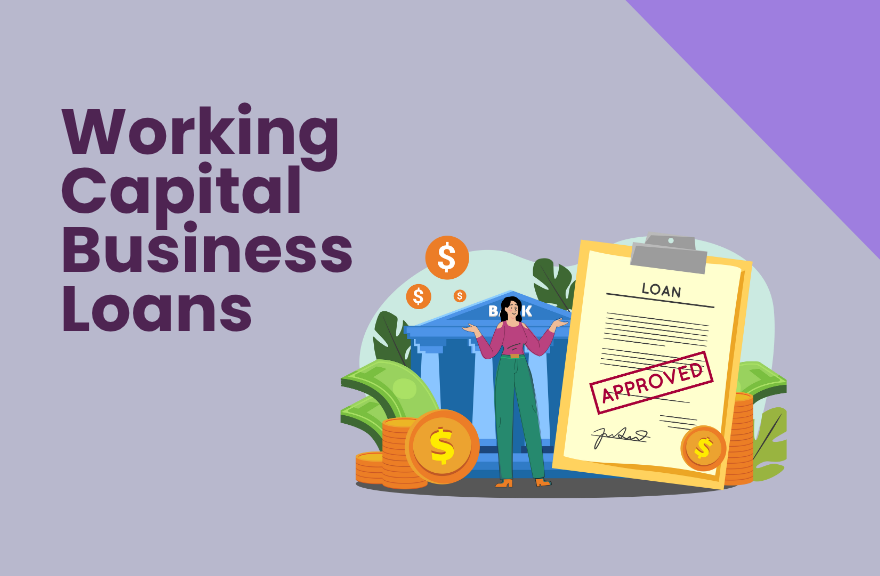Working capital business loans are a vital financial solution for small and growing businesses that need funds to manage day to day operations. Whether it’s covering payroll, buying inventory, or addressing cash flow gaps, these loans can empower business owners to run their operations smoothly without sacrificing long-term assets.
In this guide, we will break down how working capital loans function, who they benefit, the types available, real-world use cases, and how to qualify. If you are a business owner in the U.S. or Western countries looking for flexible short-term financing, this article will offer the clarity and insight you need.
What Is a Working Capital Business Loan?
A working capital business loan is a short-term loan designed to finance the everyday operations of a company. Unlike long-term loans used for purchasing equipment or property, working capital loans are typically used for:
- Paying staff salaries
- Covering rent or utilities
- Purchasing inventory
- Managing accounts receivable
These loans ensure your business remains liquid and operational, especially during slower sales periods or seasonal fluctuations.
Why Working Capital Matters
Maintaining sufficient working capital is crucial for:
- Ensuring day to day operations run without interruption
- Seizing short-term opportunities such as buying inventory in bulk
- Avoiding unnecessary debt or equity financing
According to a study by a U.S. bank, 82 percent of small businesses fail due to poor cash flow management. This statistic highlights why short-term working capital financing is often a smart solution for growing businesses.
Types of Working Capital Loans
There are multiple forms of working capital financing, each suited for different business needs:
Term Loans
You borrow a lump sum and repay it over a fixed term with interest. This option is ideal for predictable funding needs that you know in advance.
Business Line of Credit
This option allows you to access funds on a revolving basis. You only pay interest on the amount you actually draw, making it flexible for ongoing cash flow management.
Invoice Financing
You borrow against unpaid customer invoices. This is useful for companies with delayed receivables, allowing them to free up cash tied in outstanding payments.
Merchant Cash Advance
You receive upfront cash and repay it through a percentage of daily credit card sales. This type of financing is fast but often has higher costs.
SBA Loans
Offered by banks but guaranteed by the U.S. Small Business Administration, these loans have low interest rates and favorable terms, making them an attractive option for small businesses.
How to Qualify for a Working Capital Loan
Qualifying for a working capital loan involves meeting specific criteria set by lenders, who want to ensure your business can repay the loan on time. Understanding these requirements will help you prepare a stronger application and improve your chances of approval.
Credit Score
One of the primary factors lenders evaluate is your credit score. Generally, a higher credit score, usually 600 or above, increases your approval odds and may also secure you better interest rates. Both your personal and business credit scores are often reviewed. Maintaining a clean credit history with timely payments and low debt utilization can boost your score and demonstrate financial responsibility.
Time in Business
Lenders typically prefer to work with established businesses. Many require that your business has been operating for at least six months to two years. This history helps lenders assess your business’s stability and track record. Newer businesses might find it harder to qualify or may need to provide additional documentation or collateral.
Revenue and Cash Flow
Demonstrating steady cash flow and consistent monthly revenue is critical. Lenders want to see that your business generates enough income to cover the loan repayments. Having detailed and up-to-date financial records, including profit and loss statements, bank statements, and cash flow reports, will support your application and provide transparency about your business’s financial health.
Collateral
While some working capital loans are unsecured, others require collateral to reduce lender risk. Collateral can be in the form of property, equipment, inventory, or accounts receivable. Providing collateral may improve your chances of approval and allow you to access larger loan amounts or better terms. However, be aware that if you default on the loan, the lender can seize the collateral.
Additional Documentation
To strengthen your application, it is helpful to prepare comprehensive financial documents such as:
- Profit and loss statements
- Balance sheets
- Business and personal tax returns
- Bank statements
- Accounts receivable and payable reports
Having these documents ready shows lenders you are organized and serious about managing your business finances.
Real-World Example: Retail Business in Seasonal Slump
Consider a clothing store in the United States that earns the majority of its revenue during the fourth quarter of the year. During the slower months in the first and second quarters, they struggle to pay rent and staff. By taking out a working capital loan of $50,000, the business was able to:
- Cover payroll and rent
- Purchase spring inventory
- Maintain marketing efforts
Once sales picked up again in the third quarter, they repaid the loan without needing to dip into emergency funds or reduce staff. This example shows how working capital loans can help businesses bridge temporary cash flow gaps and keep operations smooth.
Advantages and Disadvantages of Working Capital Loans
Working capital loans can be an essential financial tool for businesses needing short-term funds to manage daily operations. Like any financial product, they come with their own set of benefits and drawbacks. Understanding these advantages and disadvantages can help business owners make informed decisions about whether a working capital loan is the right fit for their needs.
Advantages
- Quick access to funds to cover immediate needs
- No need to give up ownership equity
- Flexible repayment terms, especially with lines of credit
Disadvantages
- Interest rates are generally higher than for long-term loans
- Some loans require personal guarantees, putting owners at risk
- Potential risk of over-borrowing if funds are not managed carefully
When to Use Working Capital Loans
Working capital loans are best suited for situations such as:
- Seasonal cash flow cycles that cause temporary funding shortages
- Temporary expansion such as hiring seasonal workers or launching a marketing campaign
- Short-term opportunities like supplier discounts or unexpected expenses
It is generally advised to avoid using working capital loans for long-term investments such as buying property or heavy machinery.
Tips to Improve Your Approval Odds
Getting approved for a working capital loan can sometimes be challenging, but there are several steps you can take to improve your chances. By presenting a strong financial profile and choosing the right loan type, you make it easier for lenders to say yes. Here are some practical tips to help you prepare:
-
Maintain good personal and business credit scores
A strong credit score demonstrates your reliability as a borrower. Pay bills on time, reduce outstanding debts, and monitor your credit reports regularly to correct any errors.
-
Keep your financial records well organized and up to date
Lenders require clear documentation to assess your business’s financial health. Prepare recent profit and loss statements, balance sheets, and tax returns so you can quickly provide accurate information.
-
Reduce unnecessary expenses to improve net income
Improving your profit margins by cutting avoidable costs shows lenders that your business is financially responsible and capable of managing loan repayments.
-
Select the loan product that fits your business needs most appropriately
Different types of working capital loans have varying qualification criteria and repayment terms. Research and choose the option that best aligns with your cash flow patterns and repayment ability.
Where to Get a Working Capital Loan
When looking for working capital financing, businesses have several lending options to consider. Each option varies in terms of approval speed, interest rates, and qualification criteria. Understanding the pros and cons of each can help you find the best fit for your business needs.
Traditional Banks
Major banks such as Wells Fargo, Chase, and Bank of America provide working capital loans. These usually come with lower interest rates but have stricter lending requirements.
Online Lenders
Online options like Kabbage, Fundbox, and BlueVine offer faster approval and less paperwork, which makes them ideal for urgent working capital needs.
Government-Backed Options
The U.S. Small Business Administration offers loan programs, such as the SBA 7(a) loan, which is great for small businesses requiring funding under $5 million.
How Much Can You Borrow?
Loan amounts vary widely based on business revenue, creditworthiness, and lender policies. Typical amounts include:
- Term loans ranging from $10,000 to $500,000
- Lines of credit from $5,000 to $250,000
- Invoice financing up to 90 percent of the invoice value
External Factors Affecting Working Capital Loans
Several external elements can impact the availability and cost of working capital loans:
- Interest rates: Rising interest rates can increase loan costs
- Economic conditions: Uncertain economic climates may lead lenders to tighten requirements
- Industry risk: Some industries, such as retail or hospitality, may be considered higher risk by lenders
Working Capital Loan Compared to Business Credit Card
| Feature | Working Capital Loan | Business Credit Card |
|---|---|---|
| Interest Rates | Typically lower | Generally higher |
| Loan Amount | Usually higher | Usually lower |
| Repayment | Fixed or revolving | Monthly minimum payments |
| Best For | Managing cash flow gaps | Small expenses, emergencies |
Conclusion
Working capital business loans provide an essential financial lifeline for companies navigating everyday challenges and seasonal fluctuations. Whether you choose a term loan, line of credit, SBA loan, or invoice financing, selecting the right funding source and managing it responsibly can keep your operations steady and help you grow.
Before applying, assess your business’s cash flow needs carefully, maintain clear financial records, and explore multiple lending options to find the best fit. Sound financial planning combined with the appropriate working capital loan can position your business for success in competitive markets.
Frequently Asked Questions
What credit score is needed to qualify for a working capital loan?
Most lenders prefer a credit score of 600 or higher. However, some online lenders may accept lower scores, especially if the business demonstrates strong revenue.
How long does it take to get approved?
Online lenders can approve loans within 24 to 48 hours. Traditional banks may take a week or longer depending on their process.
Can startups apply for working capital loans?
Yes, but startups often face stricter requirements or may need a co-signer or collateral to secure funding.
Is collateral required for working capital loans?
Some loans are unsecured, meaning no collateral is needed, while others may require assets to secure the loan, especially from traditional banks.
Will applying for a working capital loan affect my credit score?
Yes, lenders typically conduct a hard inquiry during the application process, which may cause a slight temporary dip in your credit score. Timely payments will help maintain or improve your credit.

Introducing Emily Parker, a seasoned professional with over 5 years of expertise in DSCR loans. With her extensive knowledge and experience in the field, Varsha has consistently demonstrated a deep understanding of DSCR loan intricacies and a proven track record of delivering successful outcomes for her clients.

